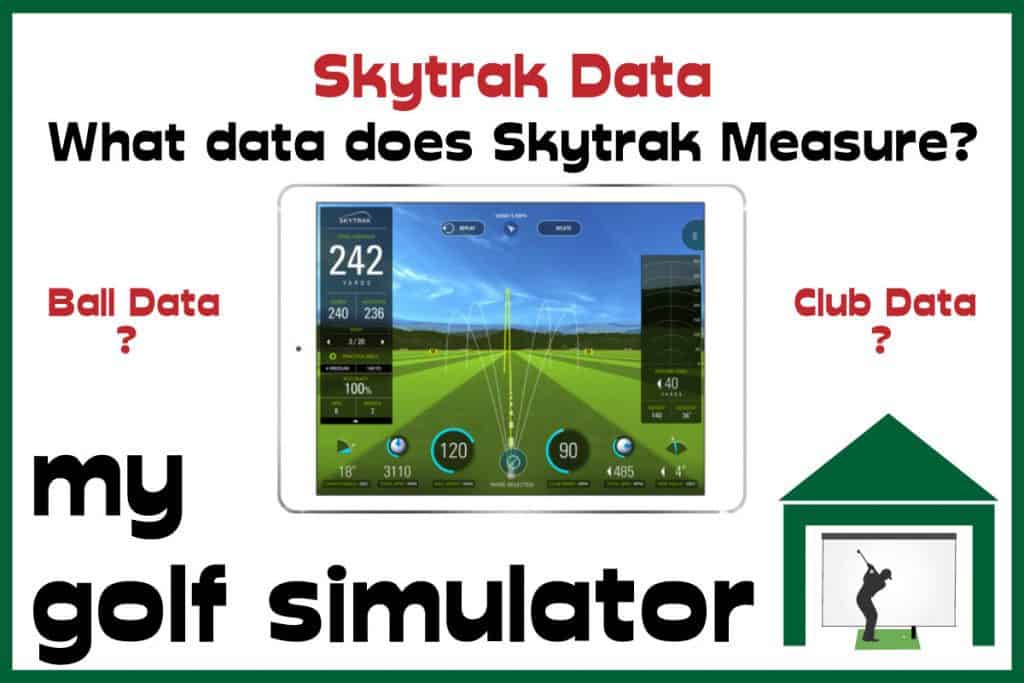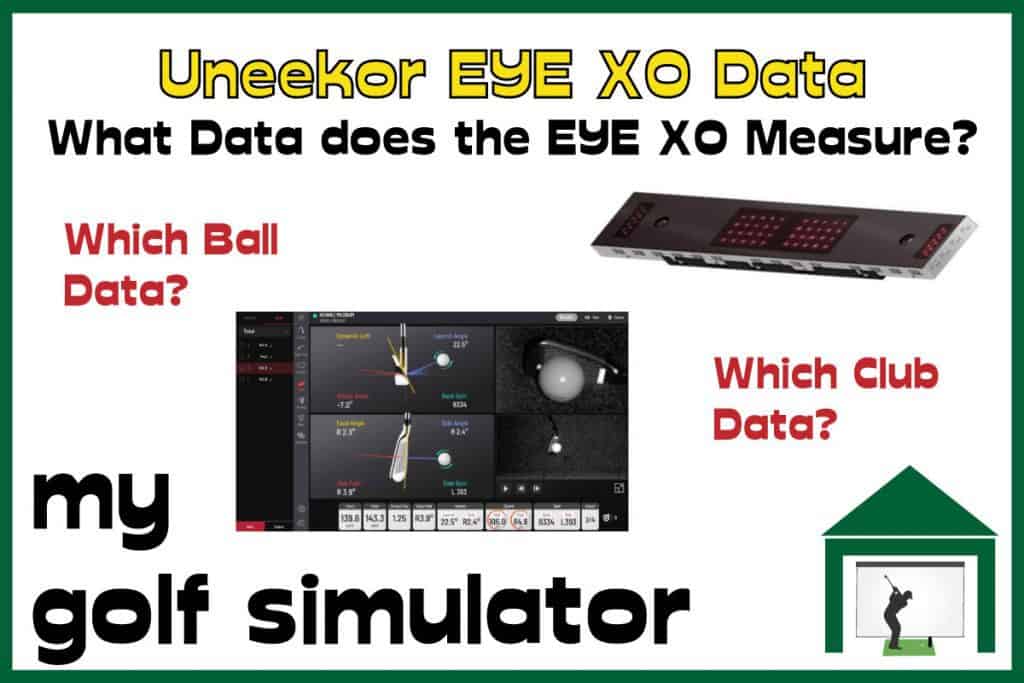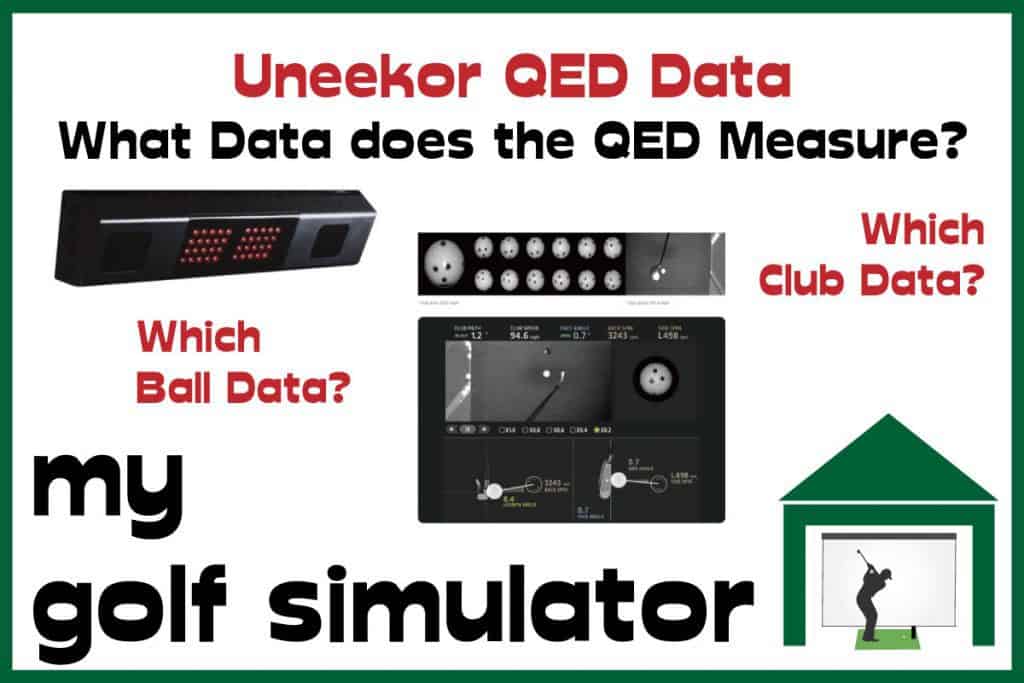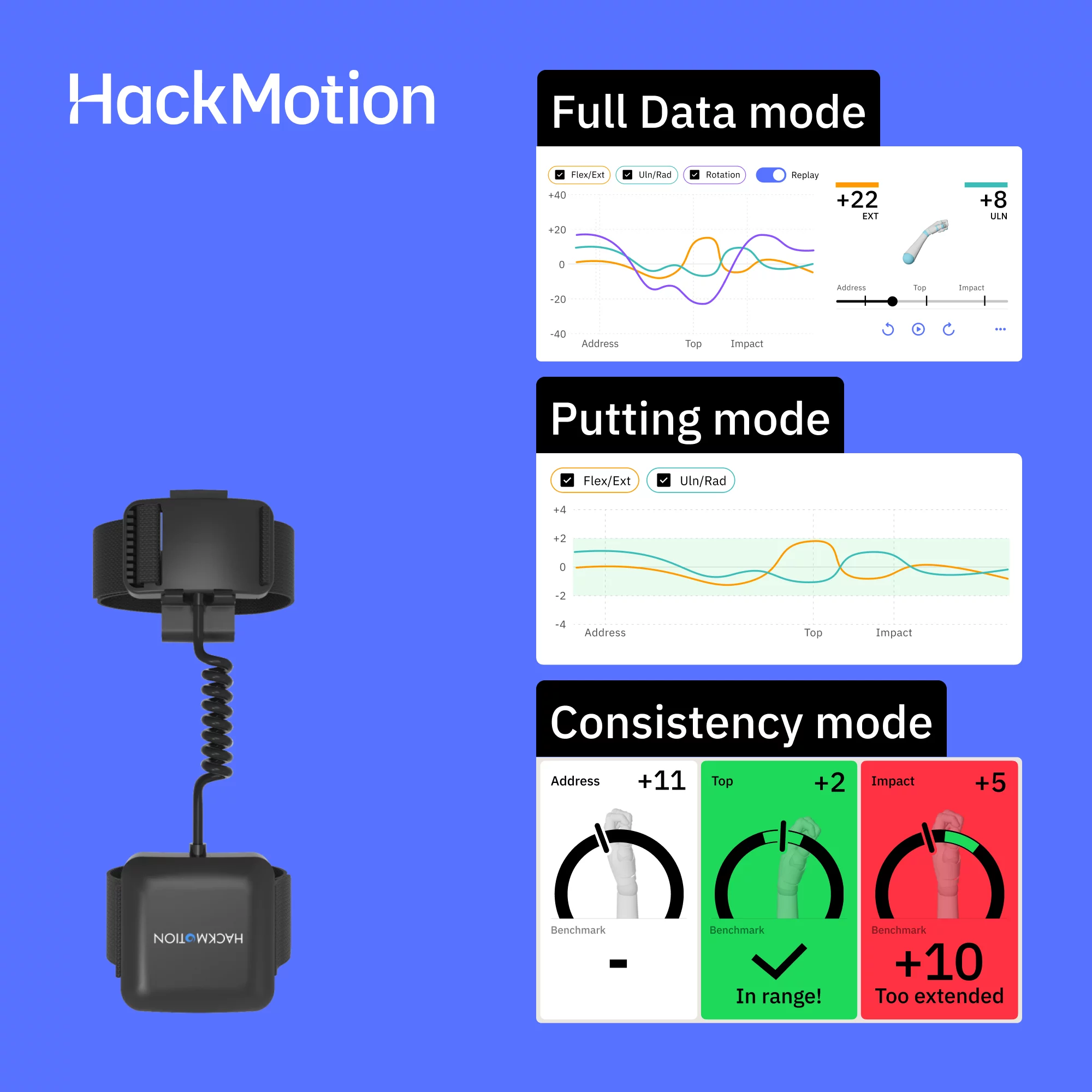Launch Monitor Data – 33 Parameters Explained
Posted in Launch Monitor Data, Launch Monitors
Do you want to learn more about the data provided by your launch monitor in your golf simulator? Are you confused between club path and face to path? This article breaks down 33 launch data parameters into 8 categories and explains each one in simple terms.
Launch Monitor Data are parameters describing the flight of the ball and the movement of the golf club head. The data can be further split into speeds, spins, distances, angles, impact characteristics and performance measures such as dispersion.
Understanding launch data can help you improve your golf.
By the end of this article, you will have an understanding of all 33 launch monitor data parameters.
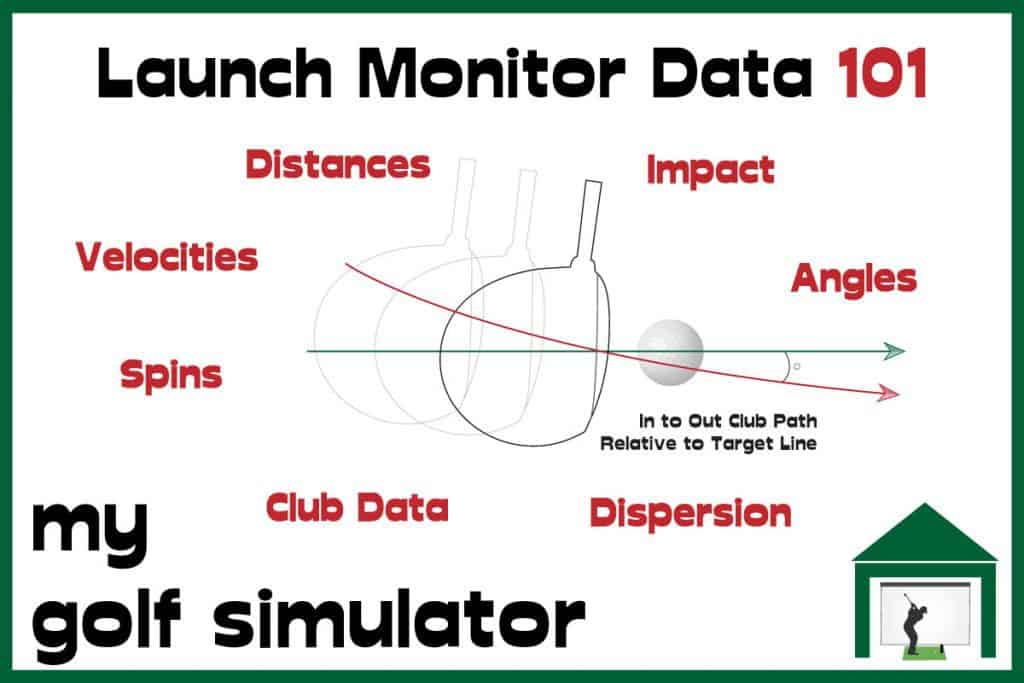
What does a Launch Monitor Tell You?
Launch monitors give you information about the flight of the golf ball after impact and some include data tracking the movement of the clubhead in your golf swing.
Some data is directly measured and some is calculated from modelling software in the simulator program you are using.
An example of modelled data would be the carry, roll and total distance of a shot, which would be calculated based on many of the other parameters, for example ball speed, spin and launch angle.
You will also be given measures of performance, such as your shot dispersion compared with your target line, longest drive, nearest the pin challenges and more.
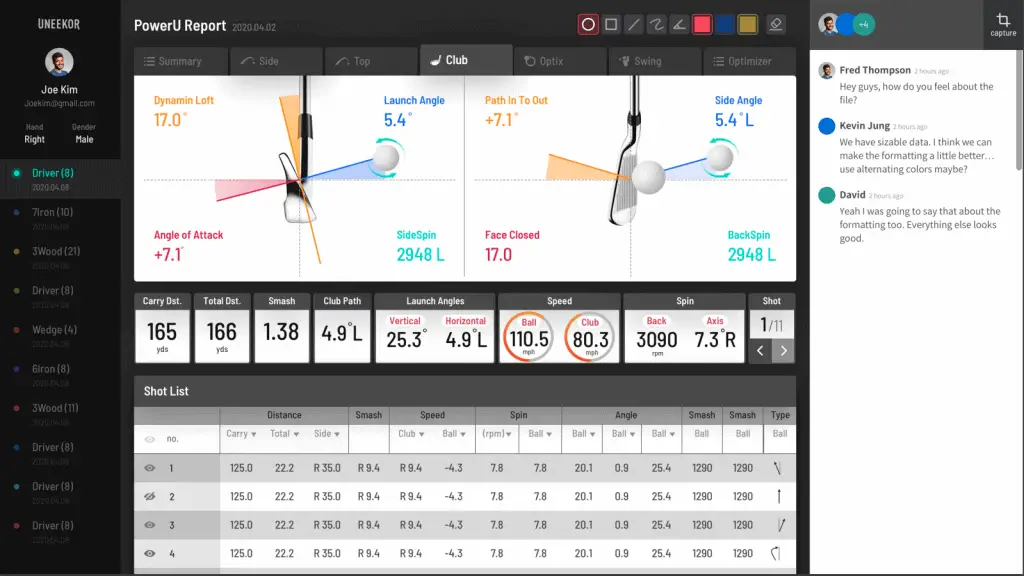
How do Launch Monitors Work?
Photometric Camera Based Launch Monitors
A photometric system employs high speed cameras set in front of the ball or around the golfer, these cameras take high speed images of some or all of the swing, the moment of impact and the moment just after it.
The cameras used in launch monitors are much, much faster than commercially available cameras for most forms of photography and they can produce up to 3,000 images in a single second.
These images can then be combined with a computer algorithm to enable the analysis of the data relating to the shot. The speed, spin and launch angle (amongst many others) of the ball will be read by the software and a golf shot rendered on the screen.
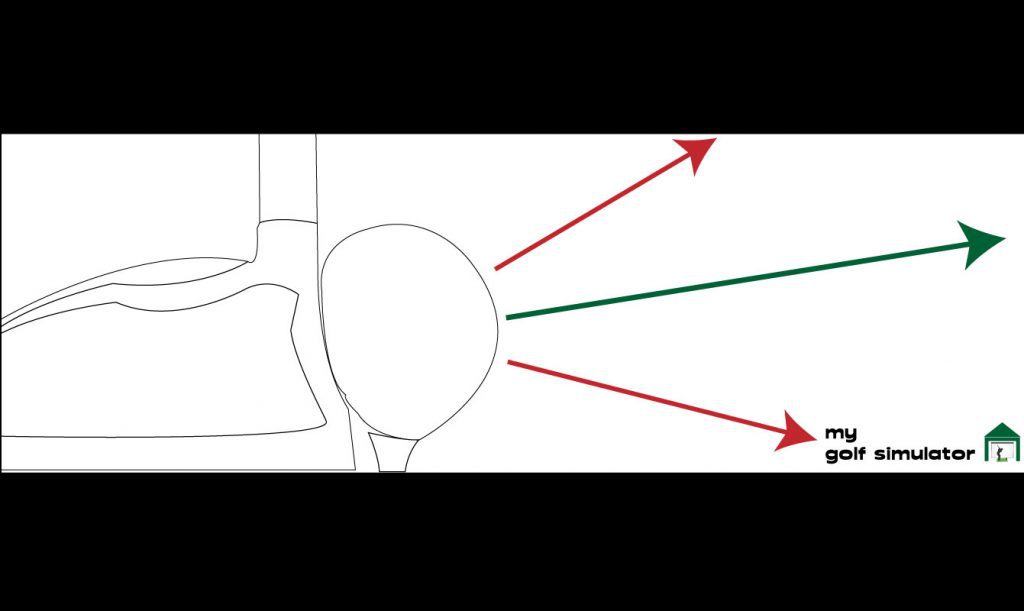
Camera based systems tend to need less space than radar systems.
Radar Launch Monitor Systems
A Doppler radar system, on the other hand, doesn’t use a camera for this data. Instead, it generates an electromagnetic field with a specific frequency and when the ball passes through this field, some of the waves are reflected and these are analysed by the system as the ball moves. This is similar to radar use in ballistics.
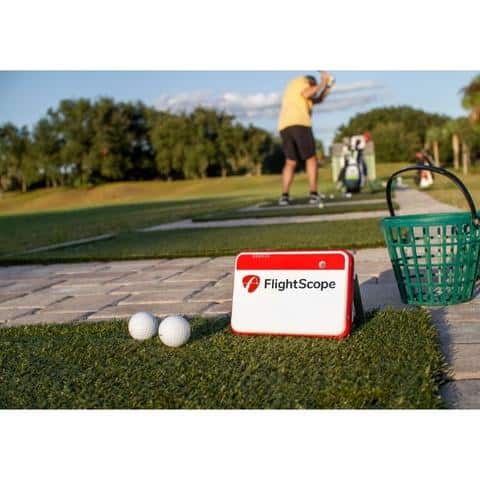
Why are Launch Monitors So Expensive?
Launch Monitors use high-performance components to allow reliable and accurate measurement of a moving object. Think of how much money a high-speed camera like the one found in a system such as Skytrak would cost, along with radar equipment and the premium modeling and analysis software required to model shots in 3D.
You actually get a lot of equipment for your money.
Launch Monitor Data – Velocities
Ball Speed
What is Ball Speed in Golf?
Ball speed is a measure of the speed at the moment the ball clears your club face. Your Golf Ball Speed is determined by how much energy is imparted to the ball by the club, the efficiency of strike, the characteristics of the equipment and ball, launch angles, spin and more.
This parameter closely relates to how far the ball will carry in the air, though it is not the only variable in calculating carry distance.
Whilst there are multiple levels of complexity to these numbers, simply aiming for a higher ball speed should equate, in general, to longer drives and greater distance.
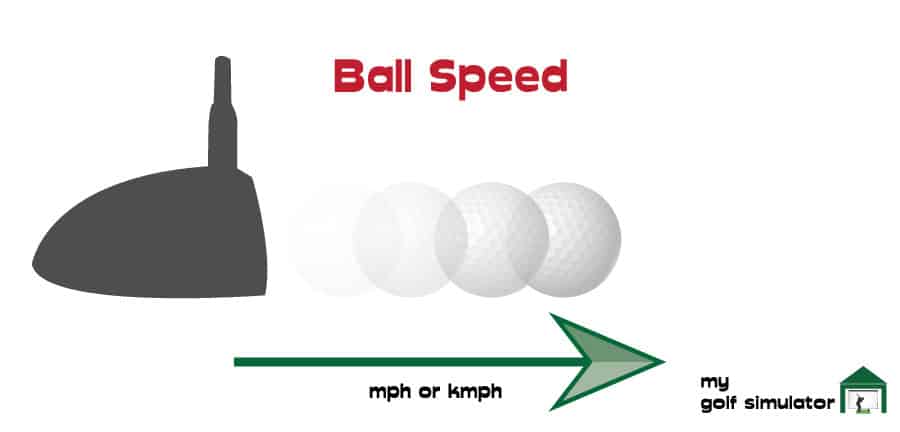
Clubhead Speed
What is Clubhead Speed in Golf?
Clubhead speed is the speed of the golf club at the moment before impact with the ball. Your club speed is another critical factor in determining the total distance that your golf ball will travel.
The faster the club is travelling prior to the impact with the ball, the faster the ball is going to go assuming that the ball is struck efficiently.
You can have a high clubhead speed but a really inefficient strike if you don’t hit the ball with the centre of the club face, or have a poor club path or an open or closed club face. We cover these parameters later on in this post.
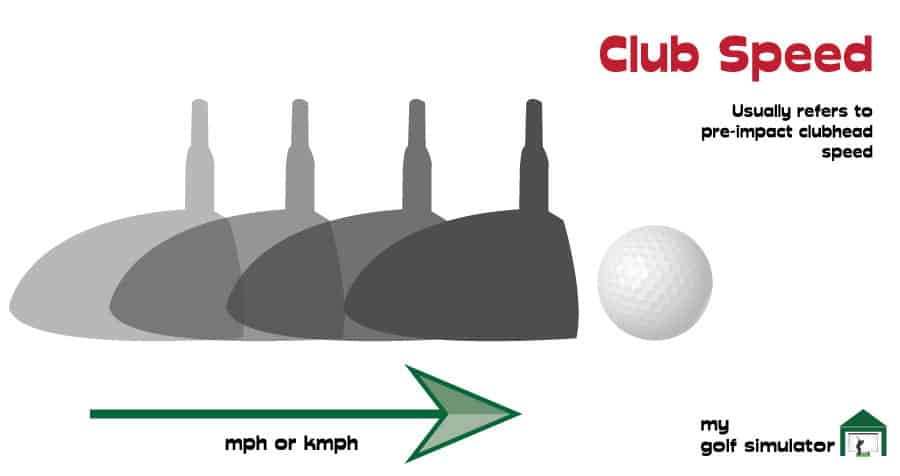
Smash Factor
What is Smash Factor in Golf?
A golfer’s smash factor is a measure of how effectively their club speed is transferred into ball speed. Smash factor is calculated by dividing the ball speed by club speed. Smash factor is determined by your swing, the clubface and the ball.
A higher smash factor, the better energy transfer from club to ball.
Note that ball speed will always be higher than clubhead speed, if your club speed appears higher than your ball speed then your data is probably faulty, or there is a problem with the units of measurement used.
The target for a golfer assuming they are driving off the tee is a smash factor of approximately 1.5. Whereas if you’re using a pitching wedge, you would expect a number that’s closer to 1.24.
Higher lofted clubs usually lead to lower smash factor numbers as more of the energy of the club is transferred to vertical launch and spin, than carry distance.
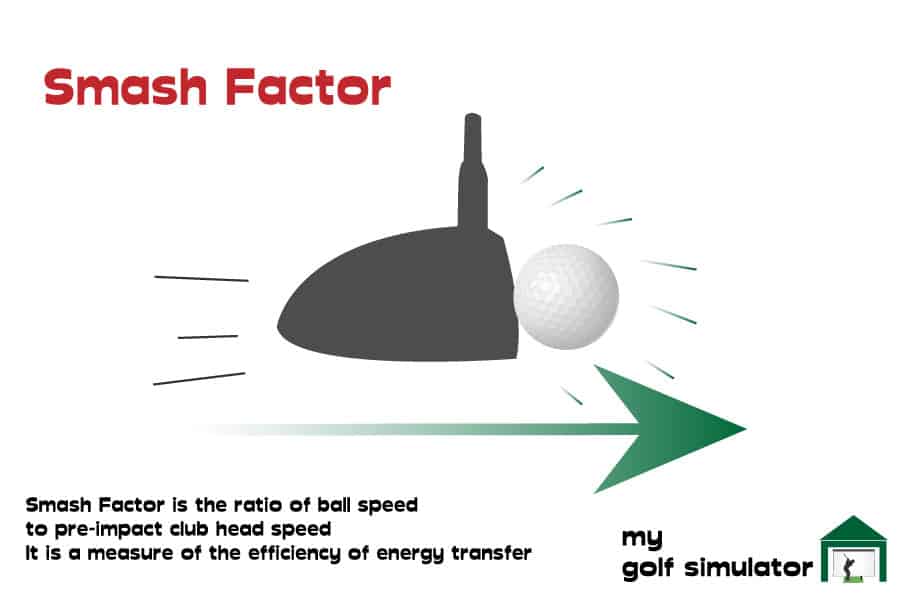
So, to work that through with some examples:
John’s ball speed is 140 mph and his club speed is 100 mph. That means his smash factor is 1.4.
Whereas Dave’s ball speed is 130 mph and his club speed is also 100 mph. Thus, Dave has a smash factor of 1.3
John ought to be hitting about 20-30 yards farther than Dave even though they’re both swinging their driver at roughly the same speed. Smash Factor is an important data point – sometimes a minor change in fundamentals can significantly improve the efficiency of club and ball impact, smash factor and distance.
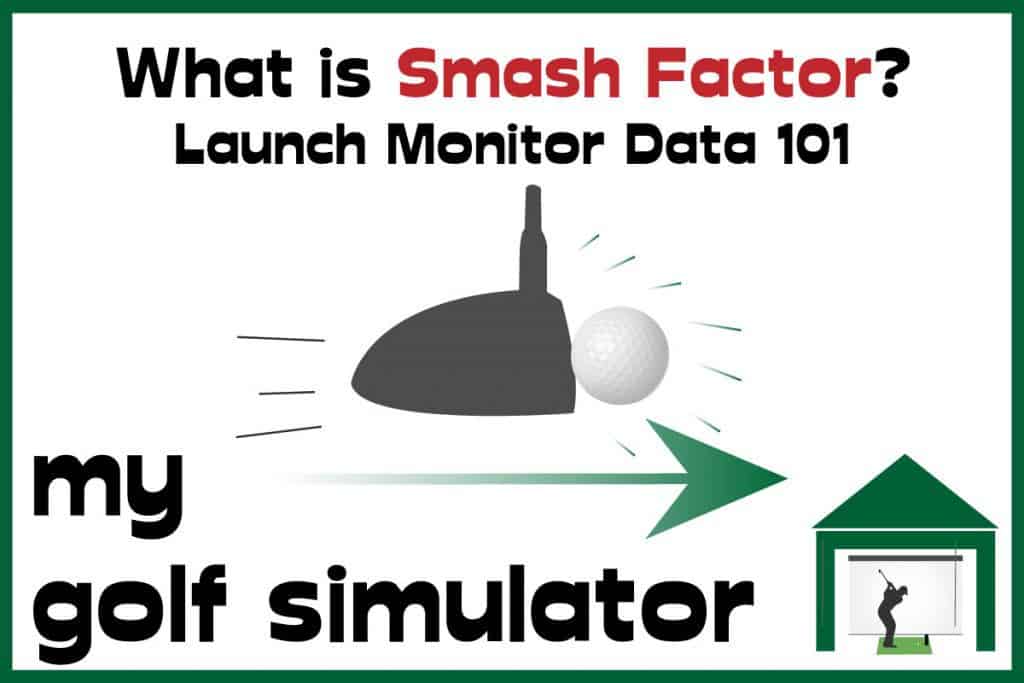
Club Speed Profile
What is Speed Profile in Golf?
The club speed profile shows the transition in the speed of the club head just before, during and just after impact and is measure in miles per hour. Speed Profile is a parameter often used by club fitters rather than your average home golfer, though it can be useful a data point to aid improvement.
Professional golfers tend to have a very linear speed profile which shows that the speed of the club is consistent throughout the swing, which tends to demonstrate a more consistent strike.
Acceleration Profile
What is Acceleration Profile in Golf?
The acceleration profile of a club shows how the club accelerates just before and after the impact with the golf ball. It is measured in gravitational force. If this profile isn’t flat, the clubhead may not be stable enough to guarantee consistency.
However, a non linear (increasing) reading can be better for shorter hitters to gain distance.
You can learn more about speed profile and acceleration profile at flightscope.com here.
Launch Monitor Data – Distances, Heights and Times
Carry Distance
What is Carry Distance in Golf?
Carry distance is the distance that the golf ball spends in the air before landing. A normal golf shot will carry, land, roll a little and then stop. Launch monitors will usually model distances for both carry and roll and also give you a total distance.
Sometimes carry distance is adjusted for elevation and can be set to do so in the settings on some systems.
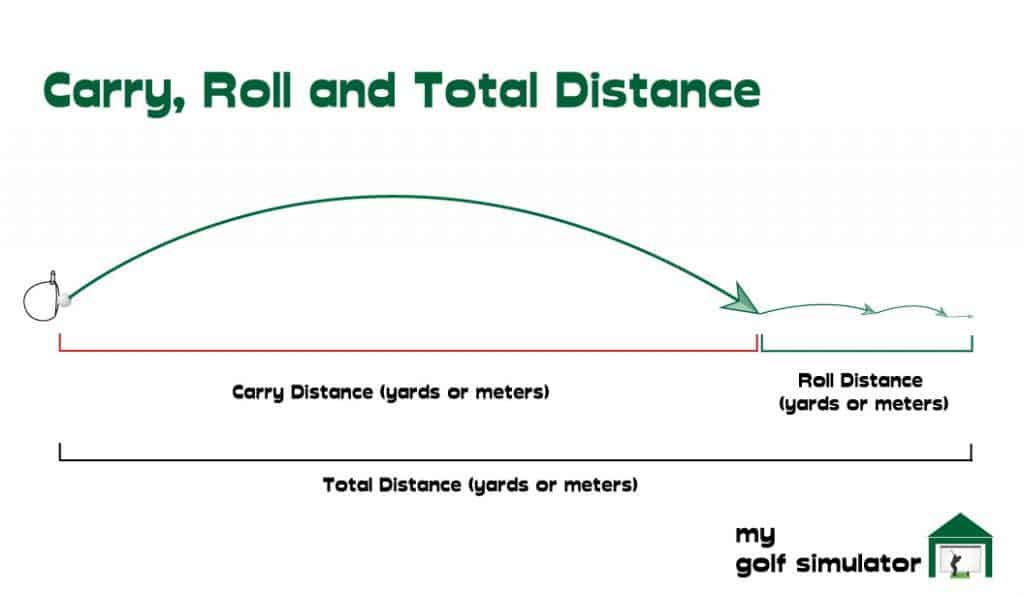
How do launch monitors calculate carry distance?
If carry depended only on a golfer’s club speed, you’d see almost no difference between the efforts of an enthusiastic amateur swinging as hard as they can, and a professional golfer.
This is because a professional has better control over their impact quality, launch angle and their spin rate and all of these things have an impact on the carry distance.
Roll Distance
What is Roll Distance in Golf?
Roll distance is the amount the golf ball travels once it lands on the ground. For most launch monitors this figure includes “bounce distance” (the distance the ball bounces before staying on the ground and rolling).
Total Distance
What is Total Distance in Golf?
The total distance is simply the carry distance plus the roll distance (or minus the roll distance if the ball has rolled back toward the golfer). It’s the means of judging where the ball comes to rest.
Apex Height
What is Apex Height in Golf?
The apex height is the top of the flight path as measured by the highest point above the ground when compared to the relative height of where the golf ball was hit.
You can work on keeping a ball low and under a certain apex height, alternatively you can practice high flying, soft landing shots to improve and create variety in your golf game.
Flight Time
What is Flight Time in Golf?
The flight time of a golf ball is the amount of time that the golf ball spends in the air prior to landing on the ground. Thus, it’s very closely related to the ball speed, launch angle and carry distance of a shot. Flight time is also known as hang time.
Maximising flight time can be a fun alternative to longest drive competitions.
Launch Monitor Data – Angles
Vertical Launch Angle
What is Launch Angle in Golf?
The vertical launch angle is a measure of the angle of the ball’s take off relative to the slope of the ground. Launch angle is a measure of the trajectory of your shot and controlling this can elevate your skill level greatly.
An optimal launch angle is one of the big contributors to how far your ball can travel, too high and it will go up quickly, spin too much and come straight back down, too low and the ball will fall before it can reach its full potential.
If the ground is sloping down and you hit up, this will have a higher launch angle than an identical shot played on flat ground.
You should find that your launch angle is always a slightly lower number than the measure of dynamic loft.
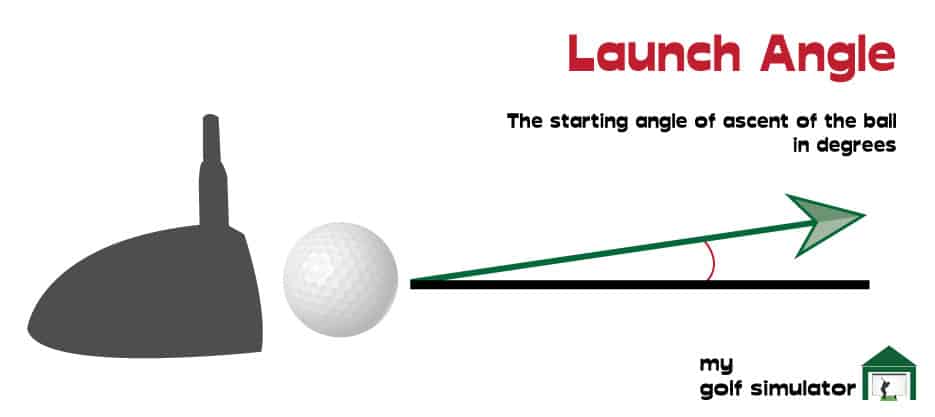
Elite golfers will be able to consistently hit chosen distances and doing so means controlling the trajectory of their shots, along with spin and direction.
Side Angle
What is Side Angle in Golf?
Side angle is also known as horizonal launch angle or ‘azimuth’ and is the angle at which the ball starts it’s flight, relative to a straight target line. Side angle is very closely related to the face angle of your club though it won’t be exactly the same.
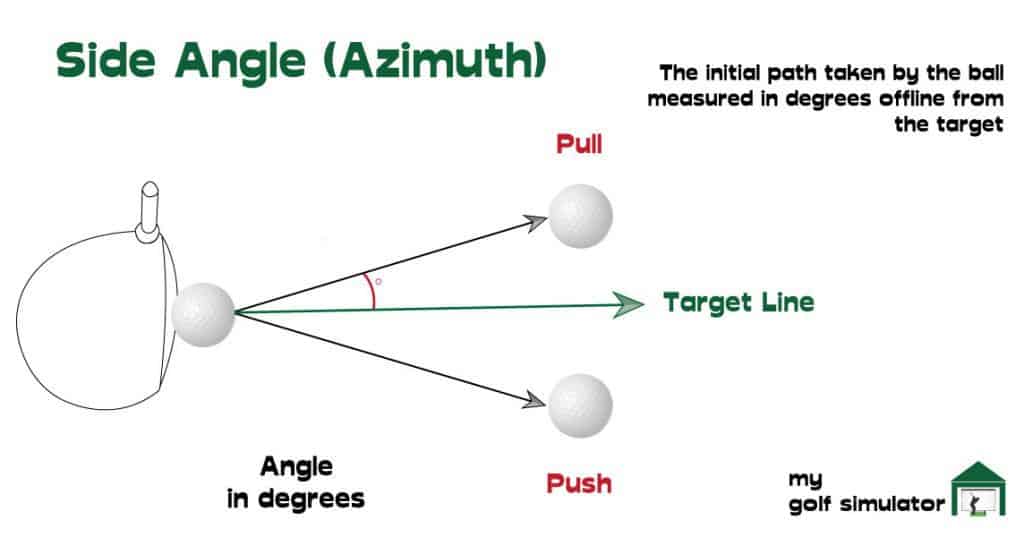
Angle Of Attack
What is Angle of Attack in Golf?
The angle of attack describes whether the club is travelling in an upwards or downwards direction relative to the ground, as it approaches the golf ball. The angle of attack can be positive or negative. Using this data parameter in your practice can help you optimise your ball striking.
A positive attack angle shows you’re hitting upwards as you strike the ball, like many golfers do with their driver when the ball is teed up, as shown in the picture below. A negative attack angle shows you’re hitting downwards towards the ball, like is normal with irons and wedges.
Angle of attack can also simply be called Attack Angle.

Lateral Landing
What is Lateral Landing in Golf?
Lateral landing describes how far the golf ball lands away from the target line. The ball could either travel in a straight line (a push or a pull) to this point, or it could draw or fade. Lateral landing is also be determined by conditions such as wind and is also known as Distance Offline.
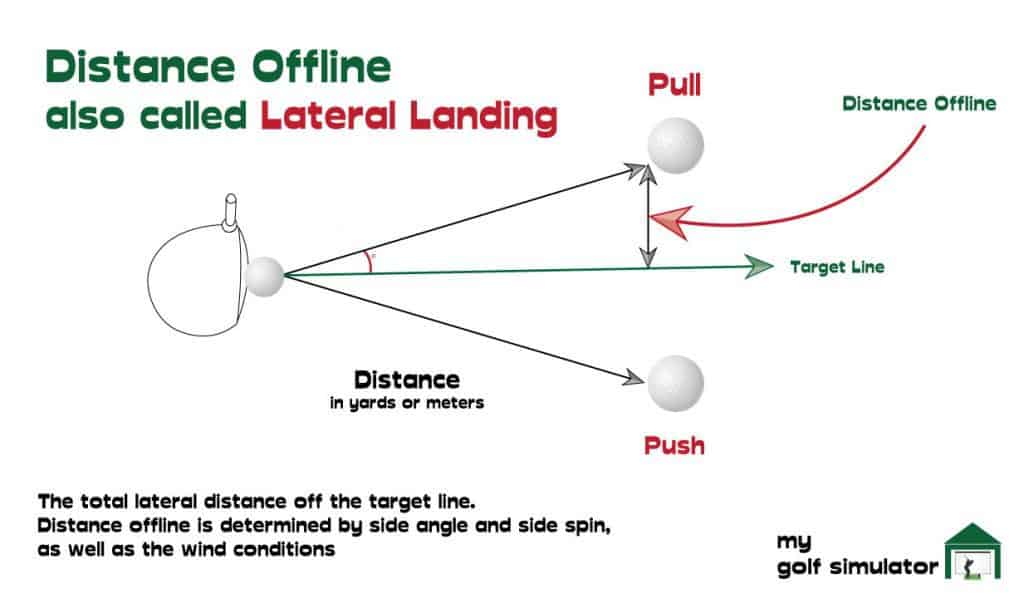
Angle of Descent
What is Angle of Descent in Golf?
The angle of descent describes how steeply the golf ball will land. A high angle of descent describes a high, soft landing shot whilst a low angle of descent will be found in a 2 iron stinger shot. Working on this parameter can help you improve your control of trajectory and distance.

Launch Monitor Data – Spins
Back Spin
What is Back Spin in Golf?
Back Spin is a measure of the speed of the golf ball’s spin in a front to back direction as it leaves the club face. An optimal back spin for a driver is likely to be around 2500rpm, whereas sand wedge shots may show around 10,000 rpm.
Back spin is closely related to several other parameters including launch angle and distance.
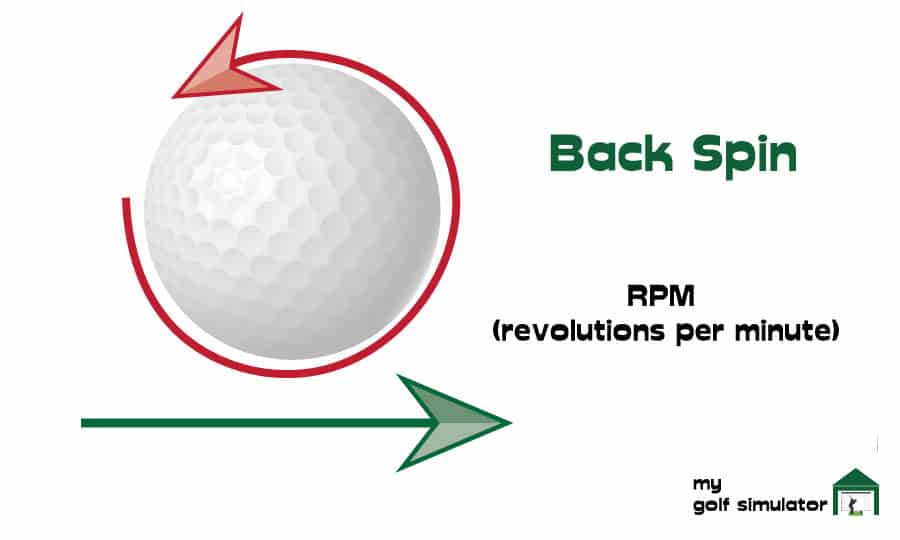
Once you get a handle on spin rate, you will start to gain a much higher level of control over your shots and be able to judge their length and height much more easily.
Side Spin
What is Side Spin in Golf?
Side spin refers to how much the golf ball is spinning in a horizontal direction. This defines how much the ball will curve off a straight line, giving you a draw or fade shot shape. In reality the ball is really only spinning in one direction, a combination of backwards and sideways.
Some launch monitors give readouts for ‘total spin’ and ‘spin axis’ to better describe this.
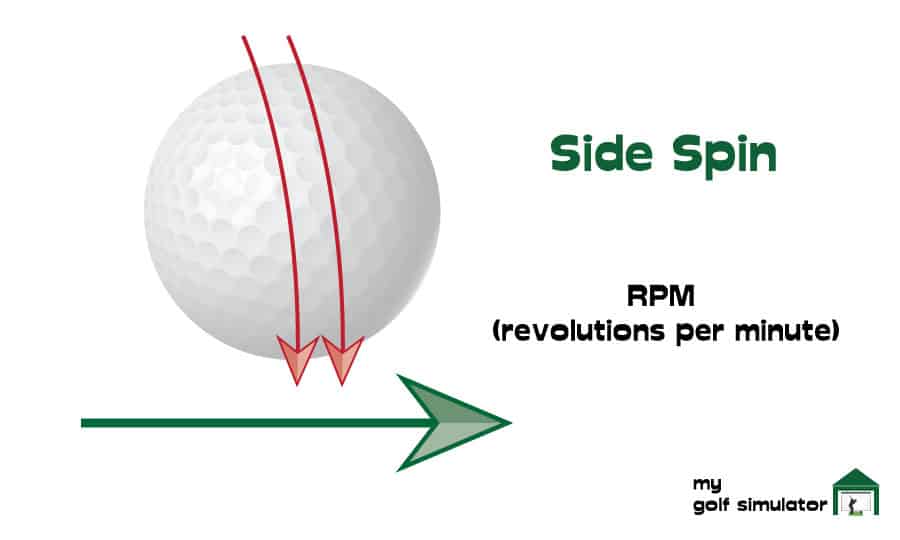
Spin Axis
What is Spin in Axis in Golf?
Spin axis is an important data point, representing the curvature of a golf shot. It combines back spin and side spin to indicate the direction of spin imparted to the ball at impact. The Spin axis will remain the same throughout the flight of the ball.
Spin axis measures whether the ball is spinning to the left (in which case you get a negative score) or the right (a positive score).
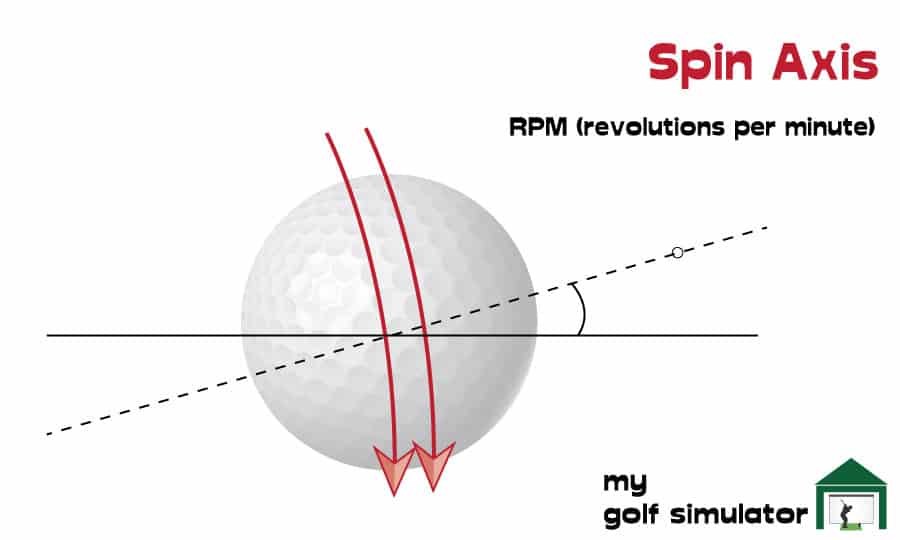
A spin axis between -2 and 2 will indicate a fairly straight ball flight, with higher numbers indicating more curvature on the ball.
Spin axis is either directly measured (for example by Trackman in outdoor mode) or modelled using the parameters of face to path and spin loft.
Spin Loft
What is Spin Loft in Golf?
The spin loft of a golf ball is the angle that is formed between the dynamic loft and the angle of attack.
Spin loft is technically a 3D measurement as it is affected by the direction the loft is pointing in too, it is the 3D angle formed between club path, attack angle, face angle and dynamic loft.
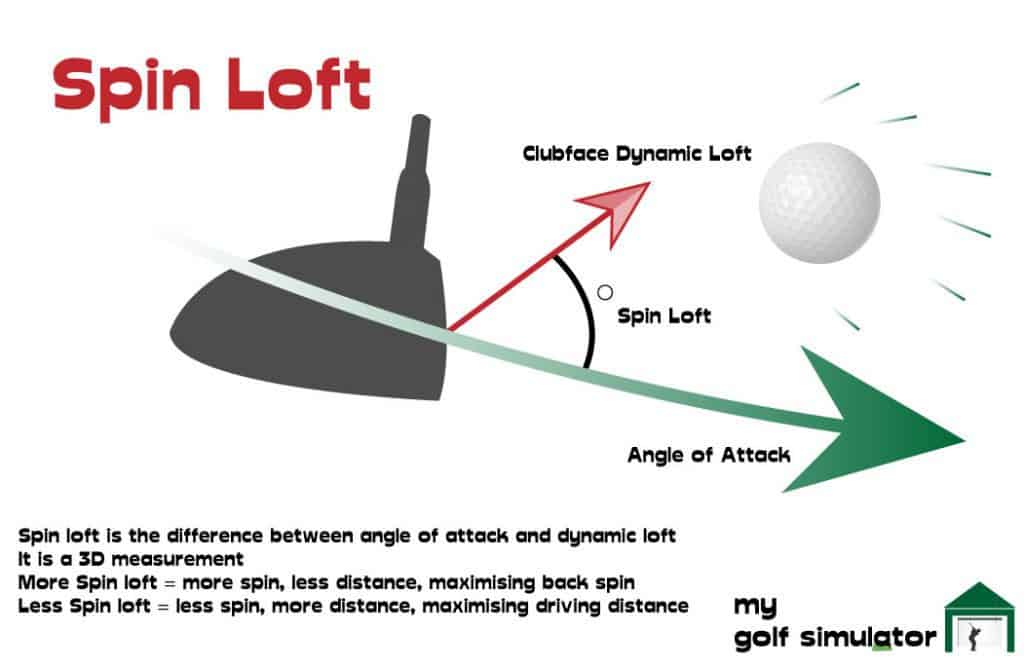
Check our this excellent video from the GolfTec Youtube Channel.
Higher Spin Lofts lead to:
- The ball will leave the clubface with less speed, reducing smash factor (the efficiency of transfer of energy from club to ball) and the distance travelled
- Increased ball spin
Lower Spin Lofts lead to:
- The ball wil leave the clubface with more speed, increasing smash factor (the efficiency of transfer of energy from club to ball) and the distance travelled.
- Decreased ball spin
Using Spin Loft to your Advantage
You can generate maximum ball spin with a faster swing speed and a high spin loft. In this case, more of your effort will be transferred to spinning the ball rather than raw distance.
You can maximise distance by having a faster swing speed and a lower spin loft. More the energy you impart to the ball will be transferred to moving the ball forwards, rather than spinning it.
This is why you don’t achieve the same smash factor numbers with lofted clubs compared with your driver.
Launch Monitor Data – Club Data
Club Path
What is Club Path in Golf?
The club path simply refers to the direction of the movement of the club head at the moment of impact with the golf ball. A perfectly straight shot would result from an in to square to in club path, with the club face being square at the point of impact.
“In to out”, at least for a right-handed golfer, is the movement to the right at the moment of impact and results in a positive club path. “Out to in”, again for a right-handed golfer, offers a negative club path and indicates a movement inwards to the left.
The image below illustrates how the path of the club can interact with the target line. You can work on a in to out club path on your journey to hitting a nice baby draw. Alternatively the out to in club path can result in a power fade.
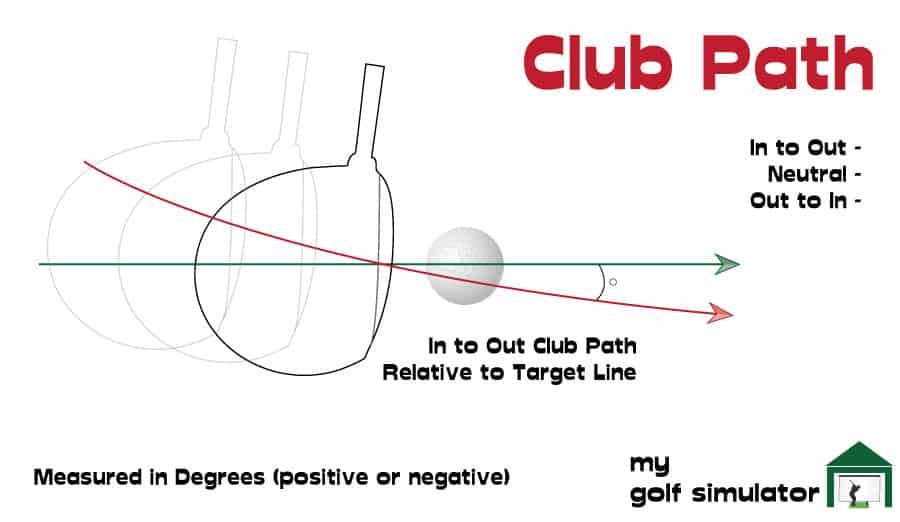
There are many other factors to consider when trying to groove in a certain shot shape. You need to be aware of your club path, face angle and the relationship of face to path.
Check out this great video from Rick Shiels Golf with a drill to assess and change your club path!
Face Angle
What is Face Angle in Golf?
Face angle is the angle of the club face relative to the target line. This tells you in which direction the face of the club is angled (either left or right) when the club impacts with the ball. The face angle parameter describes whether the clubface is open or closed.
For a right-handed golfer when the face is open – you get a positive number and a negative one when the face is closed. (Reverse these for left-handed golfers).
Imagine your club path is perfectly square to target at impact, but the face is a few degrees open. The ball will start straight and veer off to the right with a fade. A closed clubface (and a neutral path) will lead to a ball starting straight but drawing off to the left for a right handed golfer.
For most situations when you want to hit a straight shot, you’ll be looking to get as close to zero face angle as possible.
However, there are times when a straight shot is not what you need, and mastering face angle will give you a greater degree of control over where the ball will travel.
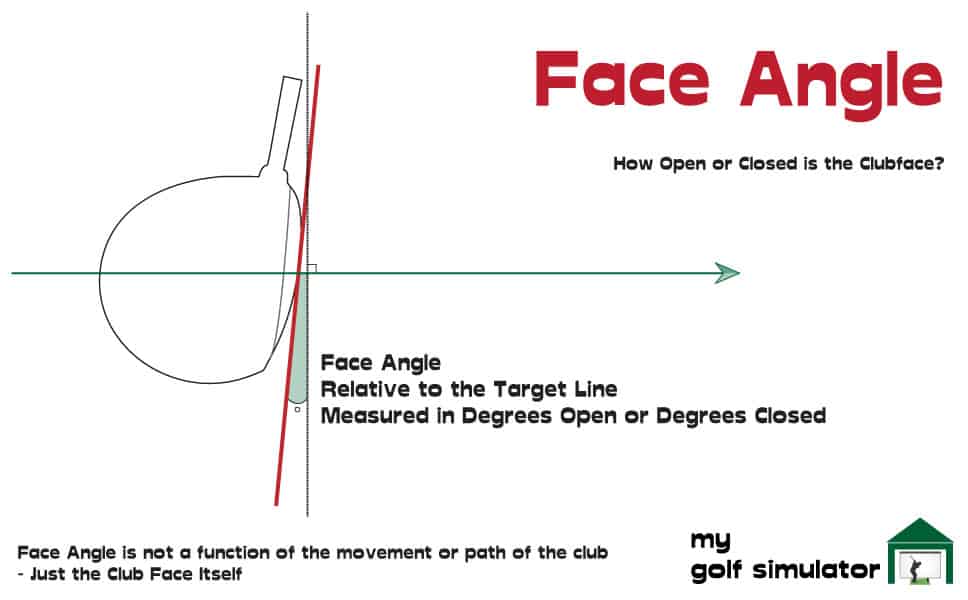
Face To Path
What is Face to Path in Golf?
Face to Path is the difference between the face angle and the club path. A clubface that’s open relative to the path of the club will produce a fade, whilst a face that’s closed to the path will produce a draw.
Note that both club path and face angle are both measured in relation to the target line. Face to path combines the two and works out whether your club face is open compared to the club path, or closed.
If the club face angle is square to the path then the ball will travel straight down that path (which may be a push or pull depending on your club path).
I know, this one can be confusing!
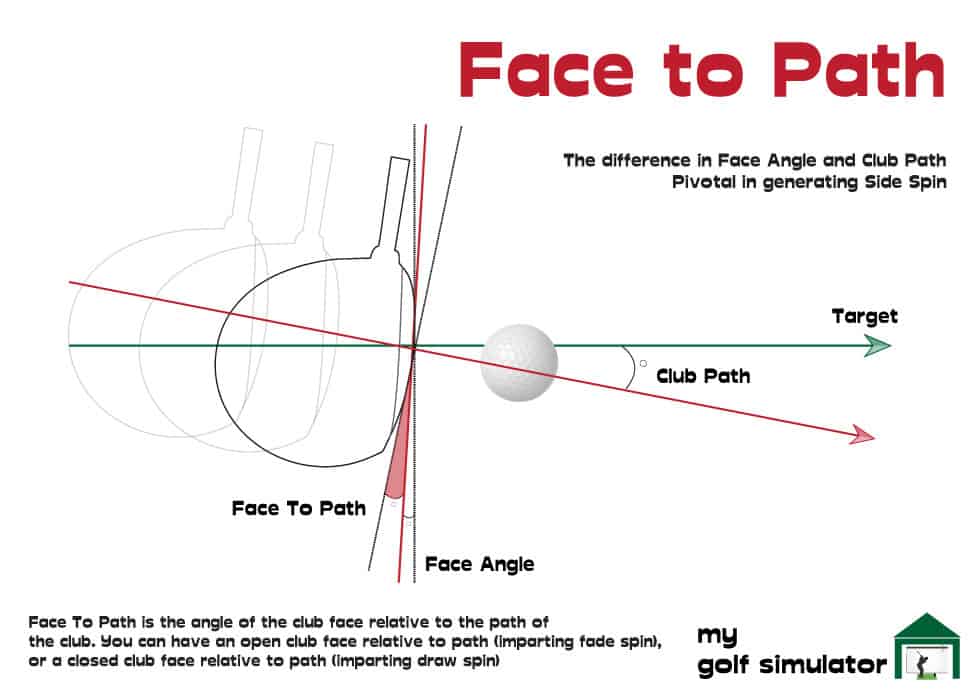
Check out this excellent video from Trackman Golf on Youtube, showing you face to path in more detail.
Dynamic Loft
What is Dynamic Loft in Golf?
Dynamic Loft is the actual loft delivered to the ball at impact. Another more complex parameter, dynamic loft means the direction of the clubface in the vertical axis, at the point of contact between club and ball when the ball is maximally compressed.
Subtly different from the launch angle, for which it is often mistaken, the dynamic loft is a measure of the amount of loft on your clubface as it impacts with the ball. This is different to the static loft, which is the loft of the golf club at rest.
The dynamic loft is affected by your attack angle, the flex in the shaft of your golf club, the compression of the golf ball, the face to path angle, and the impact point on the clubface.
When you learn to hit for the right level of dynamic loft and it’s paired with the appropriate club speed, you’re creating the ideal circumstances for a shot with maximum carry distance and a the right trajectory.
If the dynamic loft is too high then the ball will climb into the air too high and not go as far as you’d expect for your chosen club. Too low a dynamic loft will create a low flying running shot, which can be advantageous sometimes but distance control can be challenging.
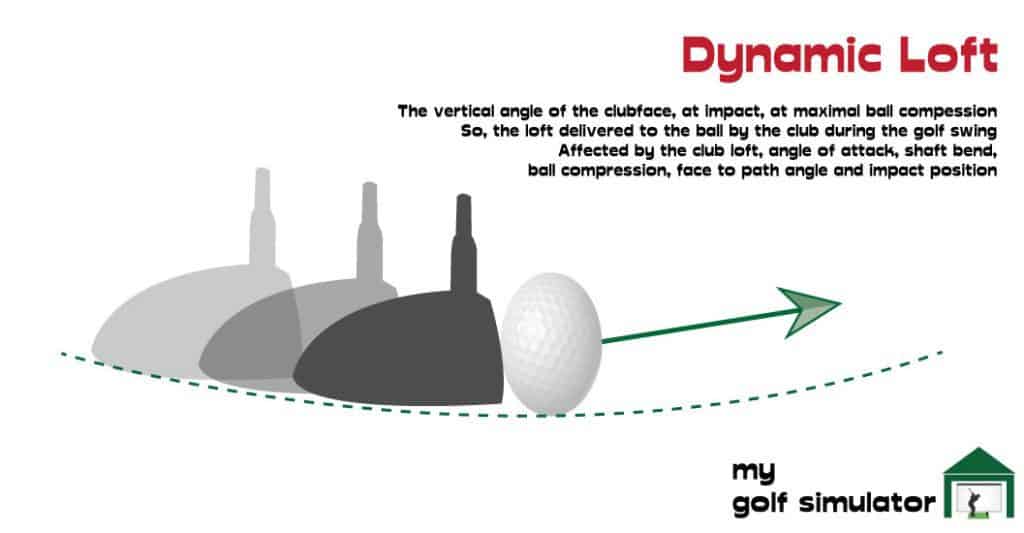
Impact Point
What is Impact Point in Golf?
Impact point refers to exactly where on the golf clubface that the ball makes contact at impact. Golfers will strive to hit the centre of the clubface as this imparts the most efficient transfer of energy to the ball and allows control over loft and trajectory as well as spin.
Impact point is measured in distance both vertically and horizontally from the centre of the clubface, and may also be referred to by terms such as strike pattern and impact location.
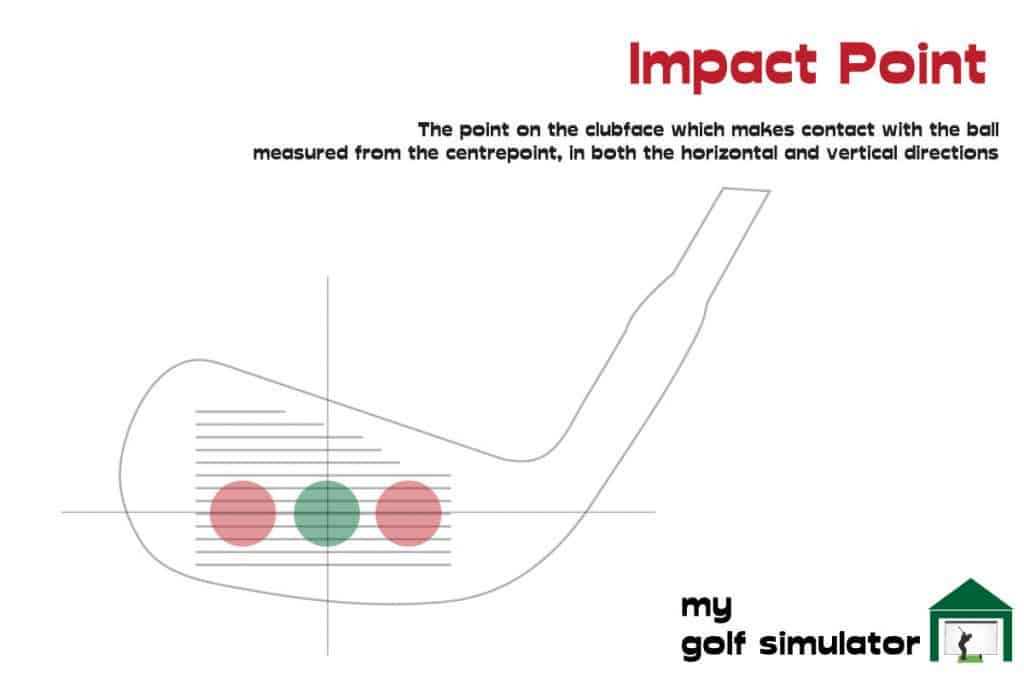
Lie Angle
What is Lie Angle in Golf?
When a golf club strikes a golf ball with the sole of the club parallel to the ground, the lie angle is the angle between the shaft and the ground.
A lie angle can be too upright, when the toe is pointed upwards as the club rests on the ground. This will cause the heel of the club to collide with the ground first, sending the ball off to the left.
A lie angle can also be too flat, meaning the heel is pointed off the ground. In this situation the toe will strike the ground first and the ball will likely head right of target.
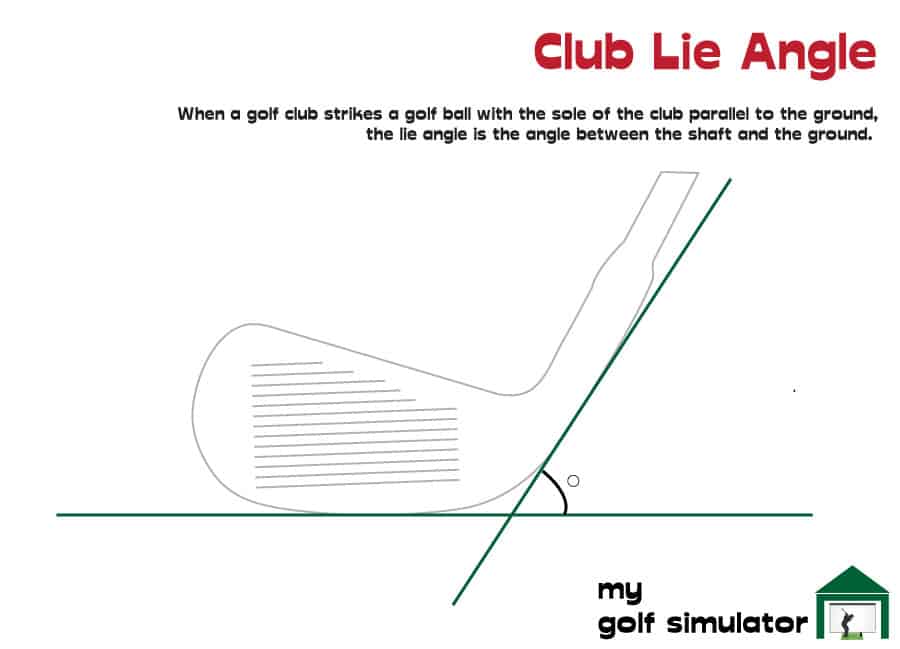
Take a look at your divots. Do they have uniform depth? Are they deeper on one side? A divot which is deeper towards the toe side indicates your club lie angle is too flat. Deeper on the heel side and your clubs may lie too upright.
It is extremely hard to allow for this problem if you identify it, so properly fitted clubs are essential. The effect of an improper lie angle increased with more loft, so it will effect your short irons and wedges more than your longer clubs.
Different club brands will have slightly different standard lie angles on their clubs too.
Some launch monitors will be able to detect the position of the clubface at impact in such a way to tell you whether you’re delivering a neutral club lie angle or not.
Club Loft Angle
What is Loft Angle in Golf?
Loft angle is a term in golf used either to describe Dynamic Loft, which we covered above, or the Static Loft on a golf club. This is the loft on the clubface at rest, not during the golf swing. This loft is the angle made between the centre of the clubface and the ground, in the forwards direction.
Swing Plane
What is Swing Plane in Golf?
Swing plane in golf is the angle made between the ground and the 3D circle made by the movement of the club towards the bottom of the arc of the swing. It was an idea developed by Ben Hogan and your swing plane is affected by the length of your arms, your posture, and the length of your club.
The angle of Swing Plane will be higher with shorter clubs as the golfer will generally be standing closer to the ball with a more upright swing. A lower angle will be achieved using longer clubs.
Low Point
What is the Low Point in Golf?
This is the point at which the club head reaches its lowest point in relation to the ball and it, generally, comes after the ball has been launched and the club drifts farther down towards the ground.
If your low point is occurring prior to contact with the ball, you are either hitting up on the ball (hopefully with a driver) or otherwise fatting the shot by bouncing the club off the mat before the ball.
Curve
What is Curve in Golf on a Launch Monitor?
Curve is defined by the amount of movement to the horizontal side in a direction perpendicular to the launch of your golf ball. It tells you the curvature of your golf ball, without having to take into account the starting line.
Curve is given in meters or yards and then with an indicator R or L to establish whether the curve was Right-sided or Left-sided.
Launch Monitor Data – Measurements of Skill
Distance To Pin
What is Distance to the Pin in Golf?
Distance to the Pin is a common competitive challenge in golf, it is a measurement of how far the ball is from the pin when it comes to a halt. It is measured in meters or yards and it can be the focus of many different practice sessions.
Shot Dispersion
What is Shot Dispersion in Golf?
Shot dispersion measures how far off your target line the golf ball comes to rest. This is often shown as a grouping of several consecutive golf shots. The closer the grouping of golf balls, the more consistently you’ve struck this series of shots.
Shot dispersion can be a fun competitive challenge or a way of determining how your game is perfoming on a given day.
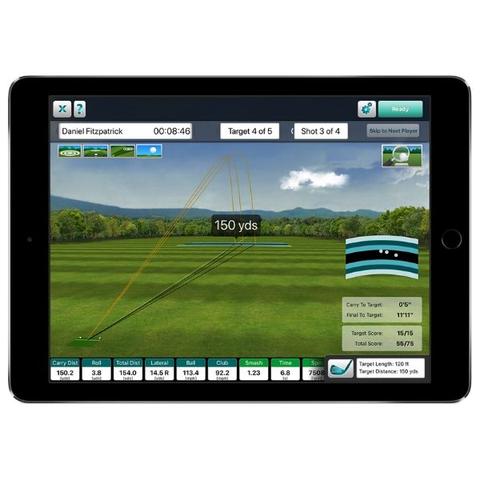
This image is from the Mevo Plus, using the iPad. You can see the dispersion of shots on the right of the screen.
Skills Scoring
As this sounds, you may find that a launch monitor with an inbuilt coaching package can also grade your shots for their technical precision and then convey this as a “skills score”. This will vary between different launch monitors.
Launch Monitor Data – Chipping and Putting Data
Some launch monitors provide you with data describing your performance with chipping and putting. You will find that the data parameters used in putting analysis arre very different to a main launch monitor, despite seeming similar from a distance.
I am planning a follow-up article detailing how to read the data parameters used putting analyzers. Keep an eye out 🙂
Launch Monitor Data – Setup Parameters
Shot Type
Shot type is simply a measure of whether you’re hitting from the tee, playing an approach shot or a feel shot, using a chip, pitch or flop shot or whether you’re simply putting. You may need to imput which club you’re using so the software can help you compare multiple shots.
Do Launch Monitors Work with Range Balls?
You can throw down any ball in front of your launch monitor and hit the shot, but you’ll need a proper golf ball to get most of the data you’re looking for.
Club data will be largely unaffected by the ball you choose to use, so you could work on your club path whilst enjoying the benefits of a foam ball. Say you haven’t sorted your enclosure yet and don’t want to damage your room.
Ball data however will clearly be affected by using an extremely light ball made of foam.
We cover this much more in our dedicated article here.

To Sum Up – What can you do with all this launch monitor data
We hope that this guide describing 33 Launch Monitor Data Parameters has been of use to you and that you now better understand how to get the most out of the data that your launch monitor generates.
Nothing beats working with a professional coach for honing your game, of course, but the next best thing is to work with a launch monitor and to allow hard data on your swing and ball flight to drive your improvements.
Understanding the launch monitor data parameters in more detail allows you to have more fun too. You can learn how to hit Tiger like stingers or high flying, soft landing long irons.
Good luck, thanks for reading!
Check out some of our related posts!
Mevo Gen 2 Space Requirements
Gray Impact Screens – Pros and Cons
ABOUT THE AUTHOR
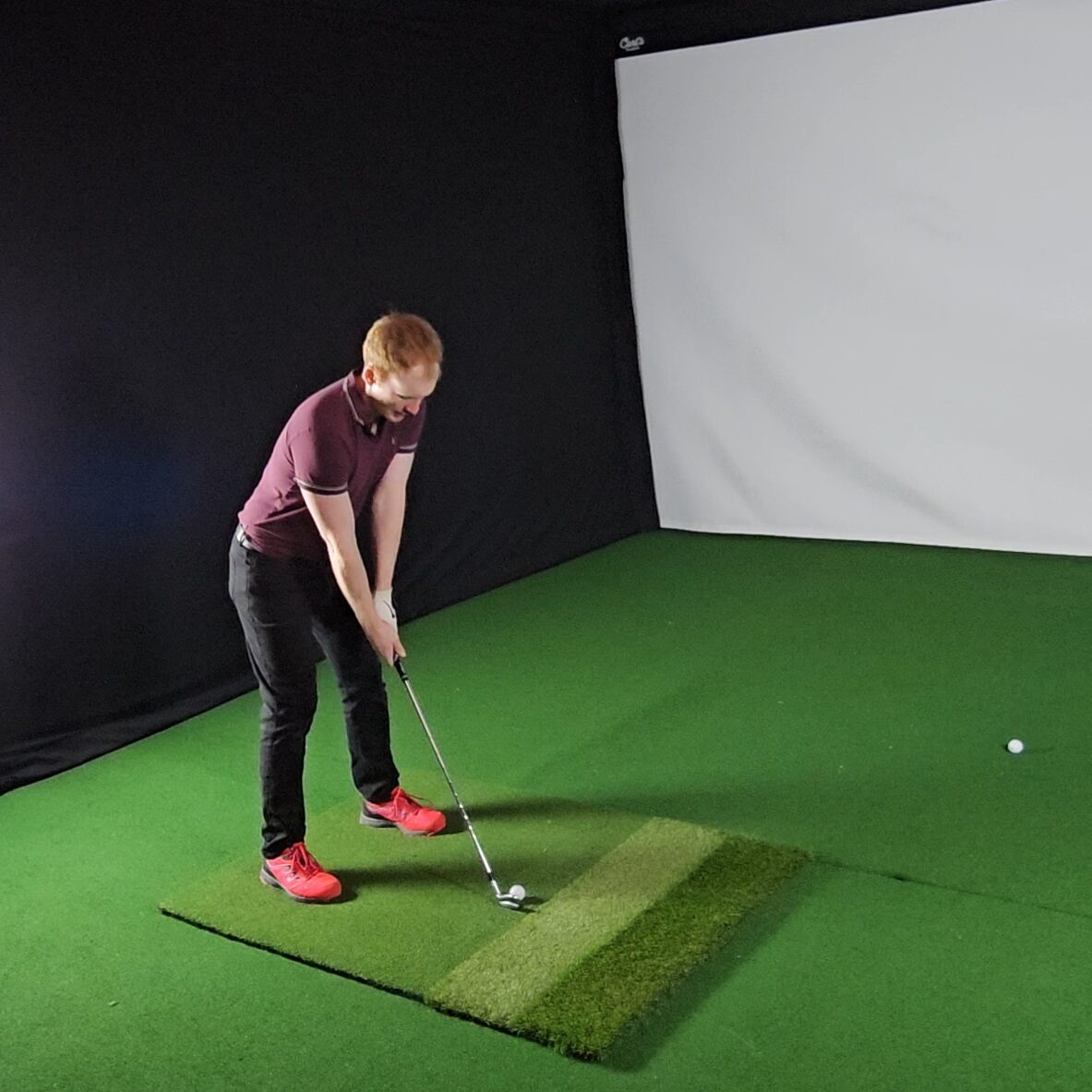
Hello! My name is Alex and it is my mission to bring you all the information you need to build your own home golf simulator! I hope mygolfsimulator.com helps you on your journey to better golf at home!
LEGAL INFORMATION
On this site, you'll find articles on all aspects of building a golf simulator. I will also link to other sites where you can buy some of the simulator components. Some of these links may be affiliate links, which means if you click them I gain a small commission at no extra cost to you. This really helps out me and my site so thank you in advance! mygolfsimulator.com and all related social media accounts are property of Awonline LTD.


